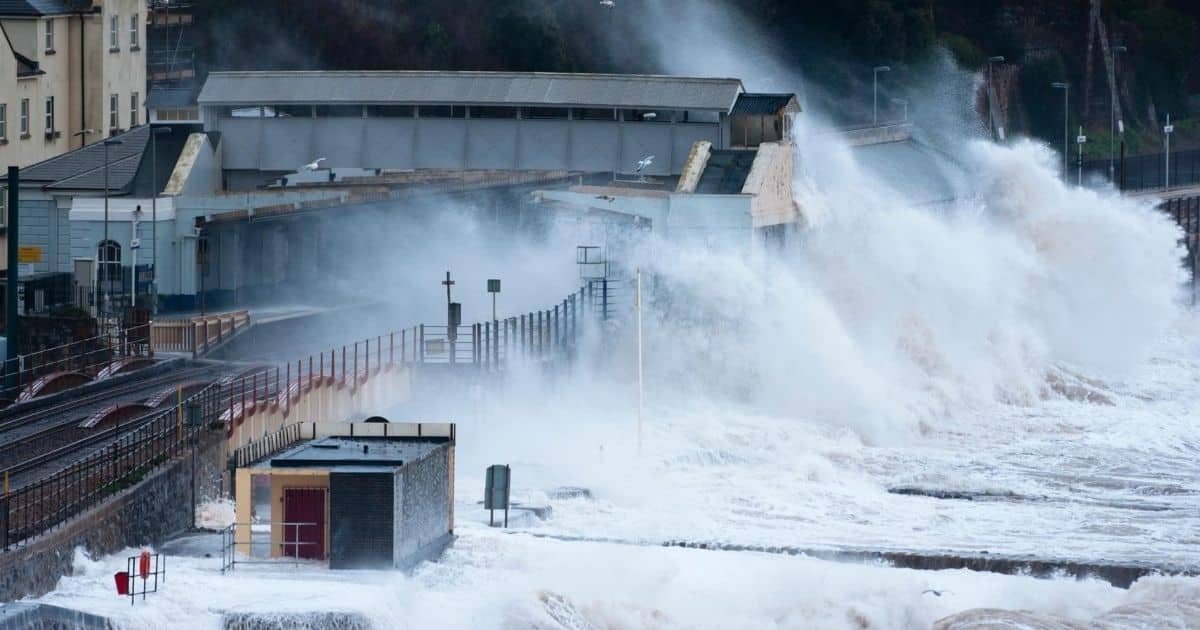The study, led by the University of Melbourne and involving the University of East Anglia (UEA), shows the land area exposed to an extreme flood event will increase by more than 250,000 square kilometers globally, an increase of 48 per cent or over 800,000 square kilometers.
This would mean about 77 million more people will be at risk of experiencing flooding, a rise of 52 per cent to 225 million. The economic risk in terms of the infrastructure exposed will rise by up to $US14.2 trillion, which represents 20 per cent of global GDP.
The analysis, published today in Springer Nature’s Scientific Reports, is based on a climate scenario where carbon dioxide (CO2) concentrations in the atmosphere continue to rise rapidly.
“A warming climate is driving sea level rise because water expands as it warms, and glaciers are melting. Climate change is also increasing the frequency of extreme seas which will further increase the risk of flooding,” lead author and University of Melbourne PhD candidate Ebru Kirezci said.
“What the data and our model is saying is that compared with now, what we see as a 1-in-100-year extreme flood event will be ten times more frequent because of climate change.”
Lead UK author Prof Robert Nicholls, director of the Tyndall Centre for Climate Change Research at UEA, said: “This analysis shows the urgency of action to address sea-level rise via both climate mitigation to reduce the rise and adaptation such as better coastal defenses, as some of the rise is unavoidable.”
University of Melbourne infrastructure engineering researcher and co-author of the report, Prof Ian Young said that while northwest Europe is particularly exposed to rising flood risk, the study shows other major risk areas in every continent with hotspots in Australia, New Zealand, China, India, South-East Asia, south-east Africa and north America.
“This is critical research from a policy point of view because it provides politicians with a credible estimate of the risks and costs we are facing, and a basis or taking action,” said Prof Young. “This data should act as a wake-up call to inform policy at global and local government levels so that more flood defenses can be built to safeguard coastal life and infrastructure.”
The analysis does not take account of existing flood defenses that in places like northern Europe already provide significant protection. But researchers warn that the extent of the increased risk highlighted by the study shows just how vulnerable large parts of the world will become unless action is taken both to mitigate the effects of climate change and expand flood defenses.
“Our research shows that large parts of communities residing in low-lying coastal areas are at risk of being devastated so we need urgent action. Vulnerable areas need to start building coastal defenses, we need to increase our preparedness, and we need to be following strategies to mitigate climate change,” said Ms Kirezci.
The study was led by researchers from Melbourne School of Engineering at the University of Melbourne in collaboration with IHE Delft Institute for Water Education, Vrije Universiteit Amsterdam, UEA and the Global Climate Forum in Germany.
By University of East Anglia
Journal Reference
‘Projections of global-scale extreme sea levels and resulting episodic coastal flooding over the 21st Century’ is published in Scientific Reports on July 30. http://dx.doi.org/10.1038/s41598-020-67736-6

